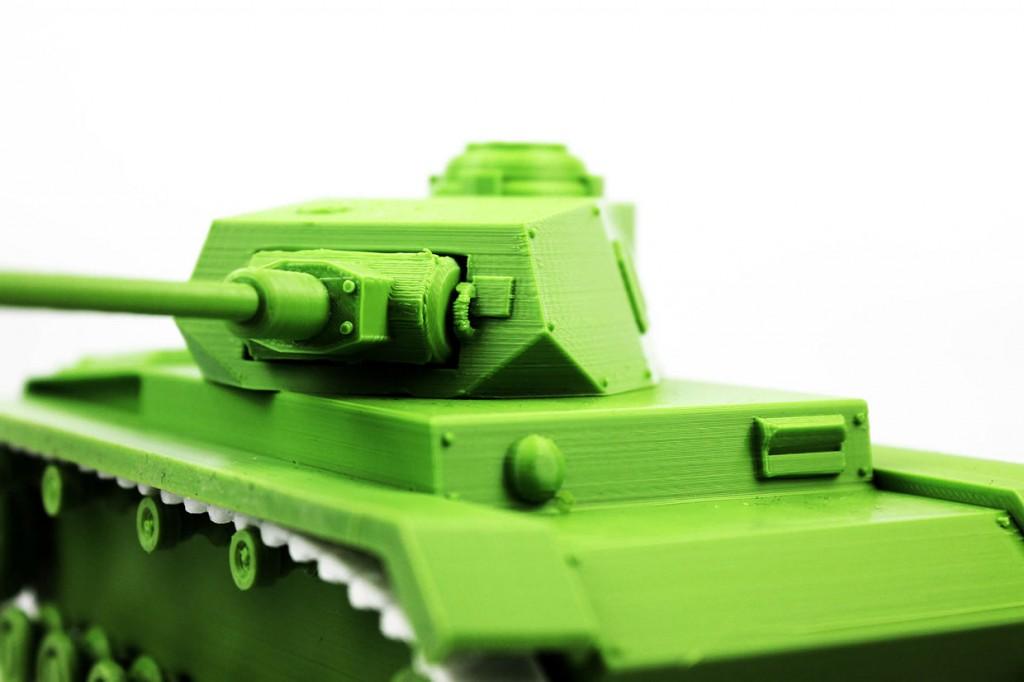
One man, named Elliott Viles, is quite the designer when it comes to creating 3D printed objects from scratch. His latest design is a German Panzer IV Tank. It is actually a 3D printable model kit, which does not take a rocket scientist to assemble.
“I am a huge fan of military history, especially World War II and even a bigger fan of German tank design from the period,” Viles tells 3DPrint.com. “I chose the Panzer IV as it was one of the first tanks I made from an airfix kit. I wanted to design this model to assemble without any glue and to be support free, as I noticed on other sites models were not designed with FDM printing in mind. Those models would require a lot of cleaning and would take a substantial amount of time to print.”
Viles designed his tank using Solidworks, and then printed it on his Ultimaker 2 3D printer using green PLA filament. The tank features a turret that has built-in bearings which allow for a full 360 degree rotation once it is mounted on the chassis. The cannon snaps into place and can be moved up and down with ease. Many of the other movable parts are printed into the tank and are ready to move around as soon as it comes off of the print bed.
“Essentially I wanted to design a good model for people to enjoy which would feature moving parts, be easily printed, require no support material and no glue to fix parts together,” Viles tells us. “If you look at the small details in my model you will notice chamfers and 45 degree slots/pins have been used. I feel that more designers should work with the technology to innovate their design around the process rather than sending designs which don’t take into consideration the limitations of FDM [3D printing].”
Viles laid out the orientation of the tank pieces so that he could eliminate the need for support material. This is sometimes a deterrent when people consider printing objects, and personally I love that he took this into account. He recommends that the tracks on the wheels be printed in a flexible filament such as NinjaFlex.
What do you think about Viles’ design? Have you tried 3D printing it yet? Discuss in the 3D Printed Panzer Tank forum thread on 3DPB.com. Check out some more photos of Viles’ tank below.